By Lt. Col. Harold E. Raugh, Jr., Ph.D., U.S. Army (Ret.)
It is a gamble at best, and an invitation to disaster at worst,” writes Ed Ruggero of the first large scale U.S. Army parachute jump that spearheaded the Allied invasion of Sicily in July 1943. The 3,400 paratroopers of the 505th Regimental Combat team (RCT) were to be the first American soldiers to set foot in Hitler’s Festung Europa, or “Fortress Europe.” Their mission was to block the main roads leading to the beachhead and prevent the Germans from disrupting the Allied landing.
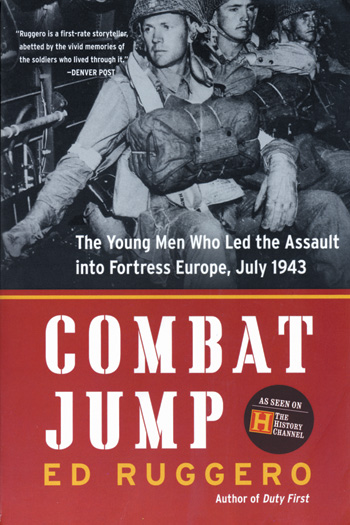 The formation, training, employment, and combat operation in Sicily of the famed 505th RCT of the 82nd Airborne Division is the subject of Ruggero’s well-crafted and fast-paced Combat Jump: The Young Men Who Led the Assault into Fortress Europe, July 1943 (2003 reprint, Perennial, New York, 2004, 388 pp., illustrations, map, endnotes, works cited, index, $13.95, softcover). This study is much more, however, than a conventional campaign history of a military unit. It highlights the rare confluence of strong personalities, superb leadership, and innovation in warfare and their application in combat.
The formation, training, employment, and combat operation in Sicily of the famed 505th RCT of the 82nd Airborne Division is the subject of Ruggero’s well-crafted and fast-paced Combat Jump: The Young Men Who Led the Assault into Fortress Europe, July 1943 (2003 reprint, Perennial, New York, 2004, 388 pp., illustrations, map, endnotes, works cited, index, $13.95, softcover). This study is much more, however, than a conventional campaign history of a military unit. It highlights the rare confluence of strong personalities, superb leadership, and innovation in warfare and their application in combat.
Thirty-six-year-old Colonel James M. Gavin commanded the 505th RCT in 1943. In 1941, he was serving in the Tactics Department at the U.S. Military Academy (West Point). He watched the progress of the European war and was especially interested in the potential demonstrated by the Germans in their airborne invasion of Crete in May 1941. Shortly thereafter, Gavin volunteered to attend the nascent Parachutist School at Fort Benning, Georgia. He displayed superb abilities, advanced in the Provisional Parachute Group, and was selected to command and form the 505th RCT in 1942. The strength of Gavin’s leadership flowed through the 505th just as it permeates this book.
Gavin led by example and worked to develop a cohesive unit of physically fit, disciplined, daring, and fearless Airborne soldiers. His men who came from across America, included Jack Norton and other newly commissioned officers who had been mentored by Gavin at West Point. Others included a New Jersey resident working for Howard Johnson’s, Berge Avadanian, who craved adventure; Otis Sampson, a former lumberjack and champion boxer; Cypriot immigrant Anthony Antoniou, who became a bazooka man; and Ed Sayre, who had served in the Texas National Guard. Ruggero interviewed these and many other combat veterans of the 505th, and their reminiscences, interspersed throughout the book, add realism and a sense of immediacy to the riveting narrative.
Of the 3,400 paratroopers of the 505th RCT who jumped at Sicily, only a few hundred landed near their objective. Their valor and sacrifices, recorded in detail, permitted the success of the operation and ensured the future conduct of Airborne operations. They took a gamble and won, and Ruggero’s story is a fitting tribute to these heroic paratroopers who put their lives on the line invading Hitler’s Fortress Europe.
Recent and Recommended
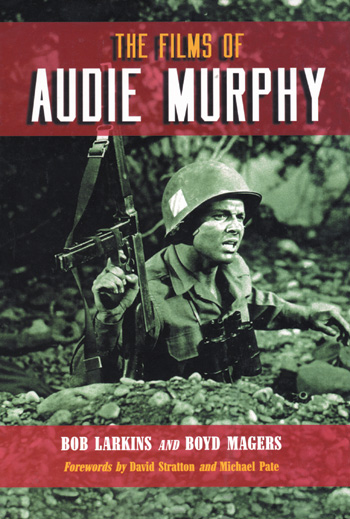 The Films of Audie Murphy, by Bob Larkins and Boyd Magers, McFarland, Jefferson, NC, 2004, 240 pp., illustrations, bibliography, index, $45.00, hardcover.
The Films of Audie Murphy, by Bob Larkins and Boyd Magers, McFarland, Jefferson, NC, 2004, 240 pp., illustrations, bibliography, index, $45.00, hardcover.
Audie Murphy is respected as the most highly decorated American soldier of World War II, having earned the Medal of Honor and every other Army decoration for valor. Returning home a national hero in 1945, Murphy was restless and unsettled. Actor James Cagney saw “a golden opportunity to cash in on the value of the Murphy medals by exploiting the somewhat unnerving contrast between Murphy’s angelic appearance and his proven expertise as a killer” and invited him to Hollywood to discuss a movie contract.
After a few bit parts, Murphy got his first starring role in the 1949 film Bad Boy. His 1949 autobiography, To Hell and Back, was a bestseller. It was made into a film starring Murphy in 1955, and it held the record as Universal Studio’s highest grossing movie until surpassed by Jaws in 1975. Murphy was, along with Rock Hudson, Tony Curtis, and Jeff Chandler, one of Universal’s “Big Four” box office draws in the 1950s, but his film career waned in the 1960s. By the time of his 1971 death in a plane crash, Murphy had made 44 films, mostly Westerns. After a context-setting introduction, this entertaining book covers each Murphy movie, giving credits and cast lists, locations, synopses, and perceptive editorial notes and comments. While not the first book on this topic, The Films of Audie Murphy is a fascinating and profusely illustrated volume, highlighting the film efforts of a war hero who became “one of the young guns of the silver screen.”
In Brief
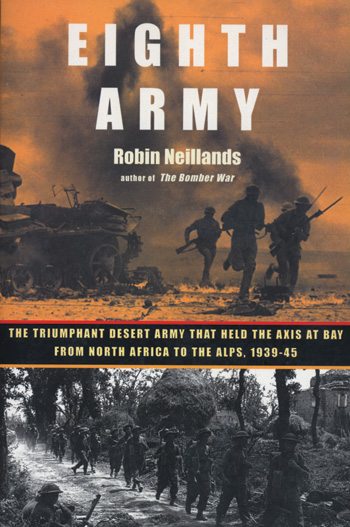 Eighth Army: The Triumphant Desert Army That Held the Axis at Bay from North Africa to the Alps, 1939-45, By Robin Neillands, Overlook Press, Woodstock, NY, 2004, 366 pp., illustrations, maps, notes, bibliography, index, $32.50, softcover.
Eighth Army: The Triumphant Desert Army That Held the Axis at Bay from North Africa to the Alps, 1939-45, By Robin Neillands, Overlook Press, Woodstock, NY, 2004, 366 pp., illustrations, maps, notes, bibliography, index, $32.50, softcover.
The British Eighth Army and its soldiers fought long, hard, and gallantly from the Western Desert in 1940 to northern Italy in 1945. Formed in the North African Desert in 1940, the Eighth Army (earlier called the Western Desert Force, then XIII Corps) initially fought the Italians with tremendous success. The Germans, under General Erwin Rommel (the “Desert Fox”), landed in Libya in February 1941. They attacked and broke through the weak British defenses. This began the see-saw battles, dubbed the “Gazala stakes,” across the North African littoral. These operations culminated in the Second Battle
of El Alamein, October-November 1942, when the Eighth Army, commanded by Lt. Gen. Bernard L. Montgomery, attacked the Germans and drove them westward. This offensive, coordinated with the Allied “Torch” landings in November 1942, eventually defeated the Axis in North Africa in May 1943. The Eighth Army then fought in Sicily and Italy. Popular historian Robin Neillands, by combining official sources with participant accounts, has written an interesting wartime account of the Eighth Army and captured the fighting spirit of its stalwart soldiers.
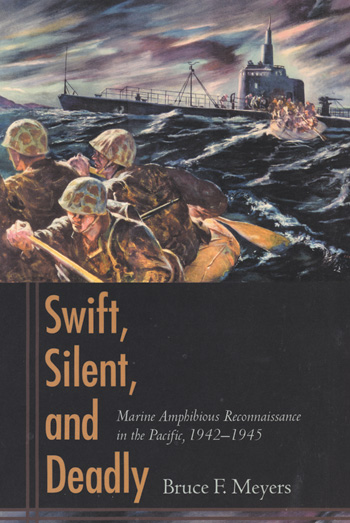 Swift, Silent, and Deadly: Marine Amphibious Reconnaissance in the Pacific, 1942-1945, by Bruce F. Meyers, Naval Institute Press, Annapolis, MD, 2004, 216 pp., illustrations, maps, glossary, notes, bibliography, index, $26.95, hardcover.
Swift, Silent, and Deadly: Marine Amphibious Reconnaissance in the Pacific, 1942-1945, by Bruce F. Meyers, Naval Institute Press, Annapolis, MD, 2004, 216 pp., illustrations, maps, glossary, notes, bibliography, index, $26.95, hardcover.
Daring amphibious operations, from Guadalcanal and the Solomons in 1942-1943 to the capture of Iwo Jima and Okinawa in 1945, characterized the war in the Pacific Theater during World War II. Prior to assaulting these treacherous, enemy-held island strongholds, the Marines inserted “swift, silent, and deadly” teams for reconnaissance. These teams went ashore, generally at night and either in rubber boats or by swimming in from submarines, seaplanes, or PT boats. Their mission was not to attack the enemy but “to obtain intelligence. They would measure water depths, chart coral heads, evaluate the beaches, and look for exits off the beaches for their landing compatriots.” As chronicled in detail by veteran Bruce F. Meyers (who commanded a combat swimming platoon in the Pacific), Marine teams conducted over 200 harrowing yet invaluable pre-invasion reconnaissance missions. This is a compelling book about brave men in action, adding immeasurably to one’s understanding of amphibious operations against the Japanese during the World War II.
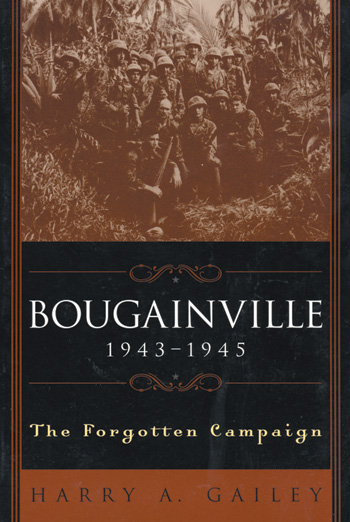 Bougainville, 1943-1945: The Forgotten Campaign, by Harry A. Gailey, University Press of Kentucky, Lexington, 2003, 248 pp., illustrations, maps, glossary, notes, bibliography, index, $19.95, softcover.
Bougainville, 1943-1945: The Forgotten Campaign, by Harry A. Gailey, University Press of Kentucky, Lexington, 2003, 248 pp., illustrations, maps, glossary, notes, bibliography, index, $19.95, softcover.
The World War II campaign of Bougainville, according to prolific Pacific Theater historian Harry A. Gailey, is “largely forgotten today.” Bougainville, the largest and northernmost of the Solomon Islands, contained six Japanese airbases. It was essential that the Allies capture these airbases and use them to support the invasion of Japanese-held New Britain and neutralization of Rabaul. Bougainville was a long-drawn-out killing ground, beginning in November 1943 with a Marine landing and the capture of three airfields. In early 1944, Army units established defensive positions and crushed a series of ferocious Japanese counterattacks. After March 1944, the Allied advance had basically bypassed Bougainville, and Australian troops became responsible for containing the Japanese, who finally surrendered in August 1945. The Bougainville campaign was also important because black U.S. soldiers, normally relegated to support roles, were committed to battle in an experiment to disprove the prevalent attitude that they were inferior and lacked courage and intelligence. While the overall performance of the black troops was generally adequate, one company of the 25th Regimental Combat Team panicked upon enemy contact, fired on its own soldiers, and fled to the rear. This further tainted the reputation of the black soldiers. Overall, Gailey’s flowing narrative and perceptive assessments make this study a useful campaign analysis.
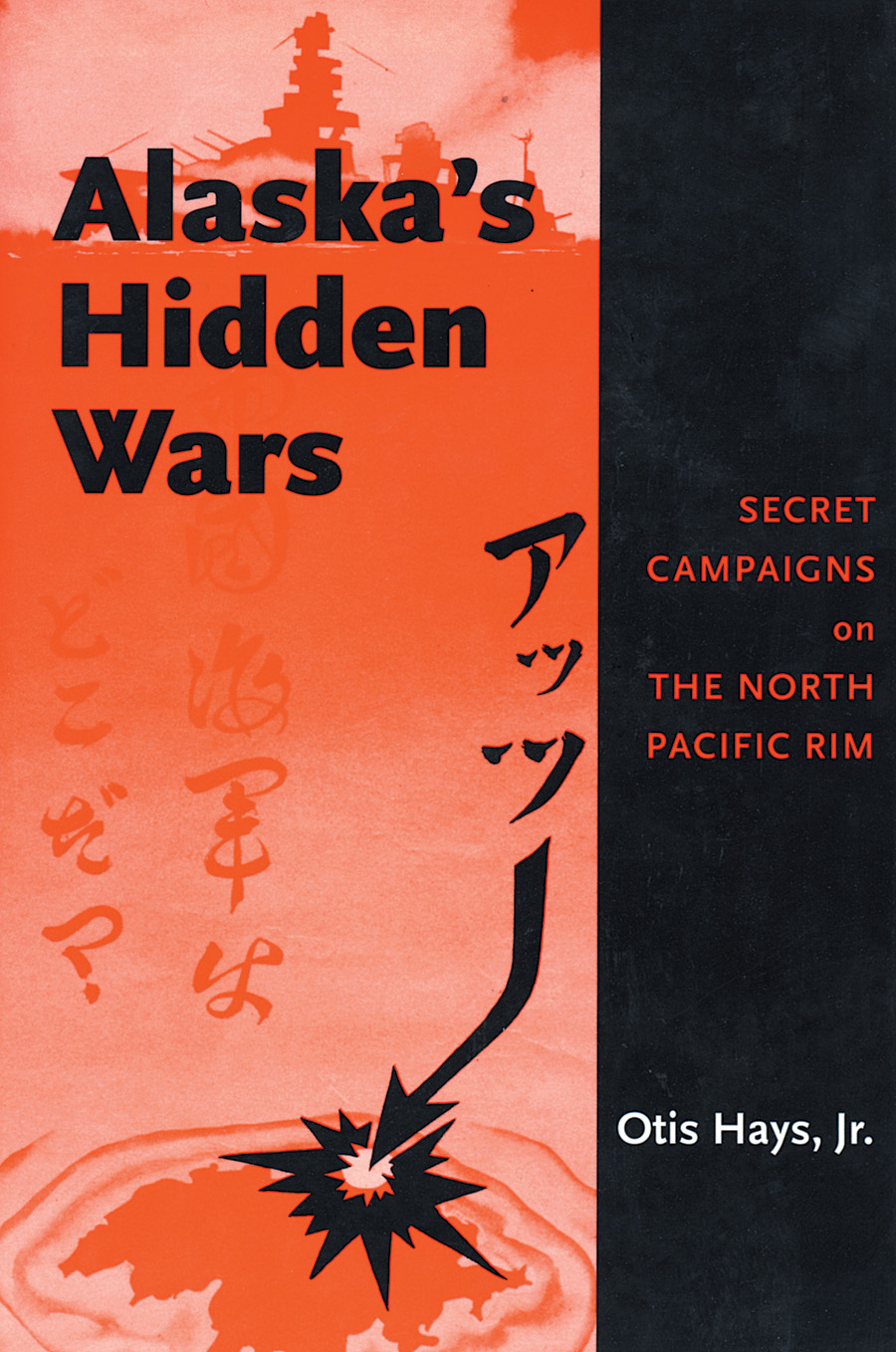 Alaska’s Hidden Wars: Secret Campaigns on the North Pacific Rim by Otis Hays, Jr., University of Alaska Press, Fairbanks, 2004, 182 pp., illustrations, map, appendices, endnotes, bibliography, index, $19.95, softcover.
Alaska’s Hidden Wars: Secret Campaigns on the North Pacific Rim by Otis Hays, Jr., University of Alaska Press, Fairbanks, 2004, 182 pp., illustrations, map, appendices, endnotes, bibliography, index, $19.95, softcover.
Otis Hays, Jr., served as an intelligence staff officer in Alaska during World War II, and is well qualified to write this book. Two island chains in the North Pacific—the Aleutian Islands and the Kuriles—witnessed the collision of the national interests of Japan, the United States, and the Soviet Union. The Japanese attacked Dutch Harbor in the Aleutians in June 1942, arguably to divert attention from their planned attack on Midway Island. They defended Attu, but abandoned Kiska, the following year. This cleared the avenue of approach for the Americans to invade Japan from the north, permitted air raids to be conducted on the Kurile Islands, and opened up much of the sea route so Americans could send Lend-Lease equipment to Vladisvostok. In addition to chronicling the military operations in the bitter North Pacific, Hays focuses on the unheralded role of second-generation Japanese-American (Nisei) soldiers in the U.S. Army. These Nisei linguists of the Military Intelligence Service manned remote outposts and translated intercepted Japanese radio transmissions and captured documents. Their contributions, according to Hays, were vital to the eventual victory over the Japanese.
 From Anzio to the Alps: An American Soldier’s Story, by Lloyd M. Wells, University of Missouri Press, Columbia, 2004, 251 pp., chronology, illustrations, $29.95, hardcover.
From Anzio to the Alps: An American Soldier’s Story, by Lloyd M. Wells, University of Missouri Press, Columbia, 2004, 251 pp., chronology, illustrations, $29.95, hardcover.
Four decades after the end of World War II, Lloyd M. Wells resurrected his journal notes, letters, and other wartime documents. He combined them with research to write a fast-paced chronicle of his Army service, beginning with his 1941 induction, 1942 commissioning, and assignment to the 6th Armored Infantry Regiment, 1st Armored Division, in Italy in January 1944. As a rifle platoon leader, Wells first saw action at the Anzio beachhead. He describes poignantly the trials, tribulations, and realism of small-unit leadership; of stress, fatigue, and fatalism; and of the surprisingly high number of “stragglers” in combat. Wells was wounded three times, and he portrays candidly his activities and thoughts and his unit’s operations slogging up Italy, through rugged mountains and strong German defenses, to “the race to the Po.” But this is much more than a simple combat chronicle. It also reveals Wells’s development as an infantry officer and maturation as a man. His purpose in writing this memoir was “to leave behind a document of at least modest scholarly interest as well as an account evocative of a simple time and of the funny, sad, terrorizing, and tender moments of a war which, with the death of each man or woman who lived through it, recedes just a little bit further into the nation’s past.” Wells, as he had done in Italy, again accomplished his mission.
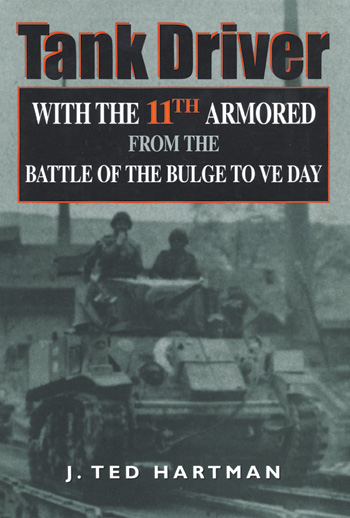 Tank Driver: With the 11th Armored from the Battle of the Bulge to VE Day, by J. Ted Hartman, Indiana University Press, Bloomington, 2003, 163 pp., illustrations, maps, bibliography, index, $24.95, hardcover.
Tank Driver: With the 11th Armored from the Battle of the Bulge to VE Day, by J. Ted Hartman, Indiana University Press, Bloomington, 2003, 163 pp., illustrations, maps, bibliography, index, $24.95, hardcover.
Ted Hartman graduated from high school in Ames, Iowa, in 1943. He enlisted to participate in the Army Specialized Training Program (ASTP), but after the U.S. Army sustained high combat casualties in 1943, the ASTP program was reduced. Most of its members were reassigned to combat arms units. The 500 ASTP soldiers at the University of Oregon, including Hartman, were assigned to the 11th Armored Division, then training at Camp Cooke, Calif., in 1944. Hartman became an M4 Sherman tank driver in B Company, 41st Tank Battalion. The 11th Armored Division deployed and arrived in France on December 21, 1944, and entered the chaos of combat in the Battle of the Bulge on Christmas Eve. The loss of two tanks and 13 soldiers, including the company commander, in his baptism of fire was a “rude awakening” to Hartman. Fierce fighting continued, through the Ardennes, assaulting the Siegfried Line, across the Rhine River, past Coburg and Bayreuth, and into Austria by war’s end. This detailed narrative, based on Hartman’s wartime letters and his later research, depicts a young soldier’s combat odyssey as a participant in frequent tank warfare.
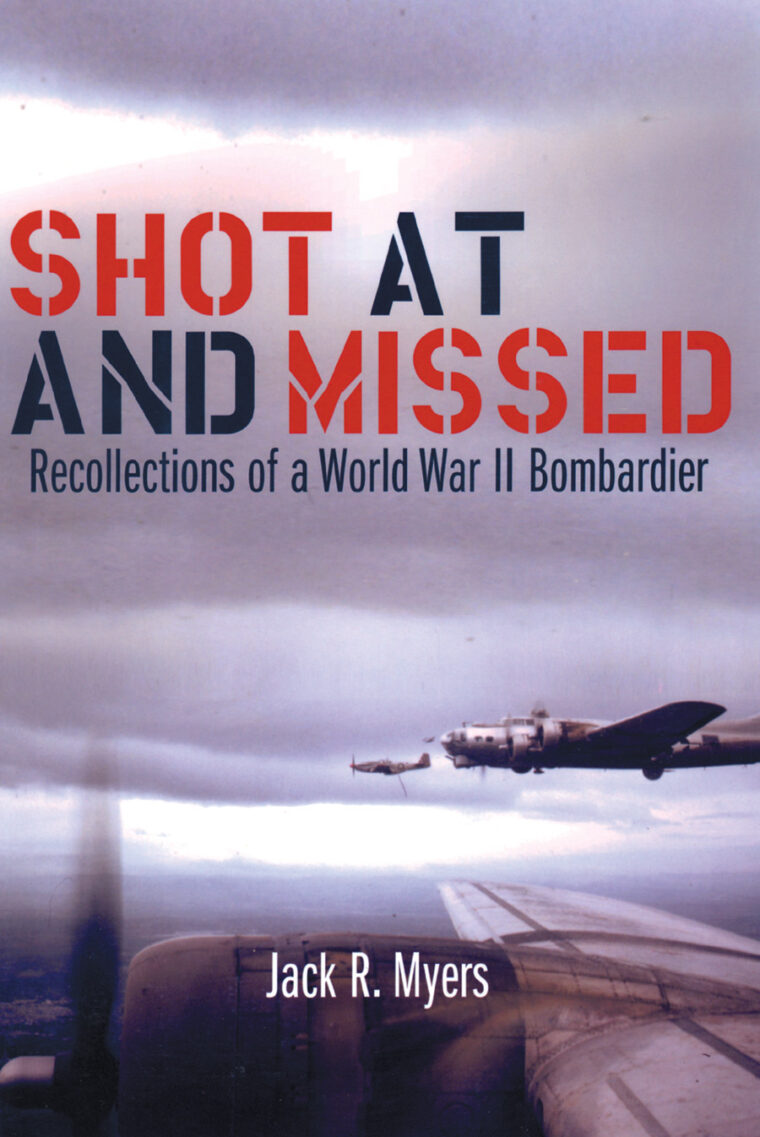 Shot at and Missed: Recollections of a World War II Bombardier, by Jack R. Myers, University of Oklahoma Press, Norman, 2004, 309 pp., illustrations, maps, $29.95, hardcover.
Shot at and Missed: Recollections of a World War II Bombardier, by Jack R. Myers, University of Oklahoma Press, Norman, 2004, 309 pp., illustrations, maps, $29.95, hardcover.
During World War II, a heavy bomber crewman on average survived only 16 bombing missions. Jack R. Myers more than beat the odds: as a B-17 Flying Fortress bombardier, Myers flew 35 wartime missions and survived the war. Throughout the war he kept a diary, sent appropriately sanitized letters to his mother, and more candid letters—“written in raw and earthy detail … warts and all”—to his brother. Myers combined these items with unit histories and the later remembrances of old comrades to write this riveting and introspective wartime memoir. Myers was stationed with the 20th Bombardment Squadron, 2nd Bombardment Group, Fifteenth Air Force, in Foggia, Italy, in 1944-1945. From there, he took part in perilous bombing missions over Italy, Yugoslavia, Austria, Hungary, and Germany. These sorties through the flak-filled skies of southern and central Europe were, according to Myers, usually fearful. Between missions, Myers lived life to the fullest, as would any 20-year-old man frequently staring death in the face. With Myers, the reader participates in bombing missions and peers through his bombsite over war-torn Europe. Myers’ experiences and narrative support Winston Churchill’s declaration that “there’s nothing quite as exhilarating as being shot at and missed.”
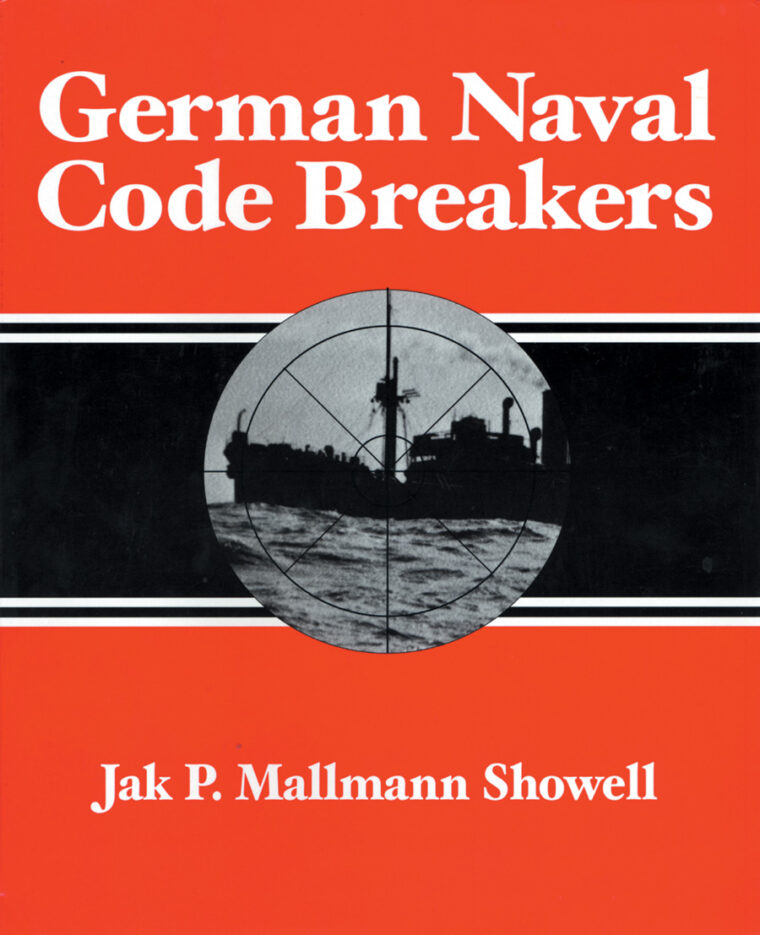 German Naval Code Breakers, By Jak P. Mallmann Showell, Naval Institute Press, Annapolis, MD, 2003, 160 pp., illustrations, maps, further reading, appendices, index, $38.95, hardcover.
German Naval Code Breakers, By Jak P. Mallmann Showell, Naval Institute Press, Annapolis, MD, 2003, 160 pp., illustrations, maps, further reading, appendices, index, $38.95, hardcover.
While many books have been written about Allied naval code-breaking activities and achievements during World War II, very little has been revealed about German activities in this area. Jak P. Mallmann Showell, a recognized U-boat authority (and whose father served as a diesel mechanic in U-377, which vanished three months before he was born), has corrected this historical oversight. He conducted extensive research in German military archives and has produced a highly readable and very informative study of the German Radio Monitoring Service. Showell traces its evolution from 1919 through its expansion and incorporation into the German naval intelligence organization and into operation with surface raiders and U-boats. The role of German code breakers in naval operations in Russian and European coastal waters, as well as in the Atlantic and Mediterranean, is described in detail. These revelations suggest that Allied versions of selected wartime naval operations should be reassessed. Showell’s excellent study, supplemented with captivating photographs, tells the indispensable story of German naval code breaking activities in World War II.
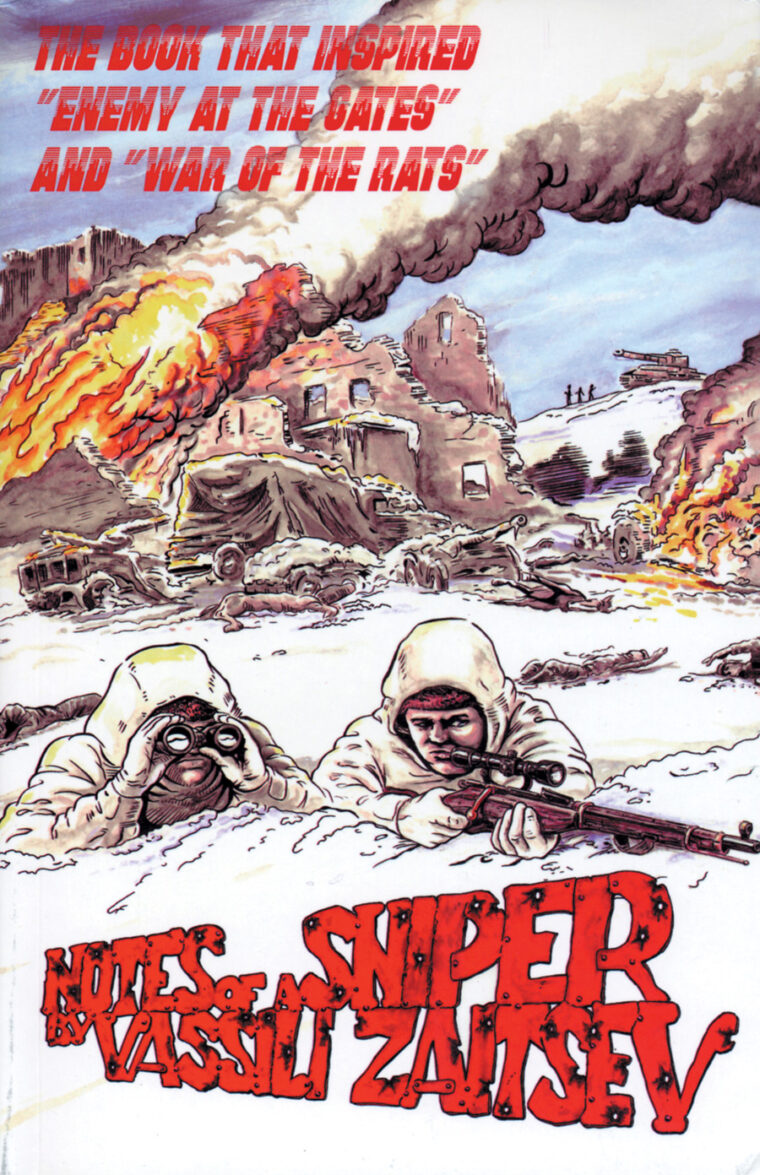 Notes of a Russian Sniper, By Vassili Zaitsev, 2826 Press, Los Angeles, 2003, 281 pp., illustrations, map, $9.95, softcover.
Notes of a Russian Sniper, By Vassili Zaitsev, 2826 Press, Los Angeles, 2003, 281 pp., illustrations, map, $9.95, softcover.
Vassili Zaitsev was a hunter from childhood. Born in Russia in 1915, he spent his early years in the forests of the Ural Mountains, was taught to hunt rabbits, and later stalked and shot wolves, bears, and other big game. Zaitsev became a stealthy, successful sharpshooter. His grandfather admonished him to “shoot with a steady aim and look your prey in the eye.” In 1937, Zaitsev was drafted into the Soviet Navy, and in September 1942, he and his fellow sailors were reassigned to the 284th Rifle Division and flung into the swirling maelstrom of combat in “the fire-spitting ruin of Stalingrad.” By this time, Stalingrad was an inferno, a tortured concrete jungle of demolished factories, laced with labyrinthine paths and trenches and split by the Volga River. Zaitsev’s expert marksmanship was quickly recognized and he became a sniper. His mission was to “drill fascists” and “kill Fritzes,” and in the Stalingrad slaughterhouse, Zaitsev killed about 300 Germans. A German sniper was sent to eliminate Zaitsev, but during the ensuing game of cat-and-mouse, Zaitsev killed his adversary. Zaitsev’s fast-paced and gritty account, which reportedly inspired the recent movie Enemy at the Gates, realistically depicts the brutality and savagery of combat on the Eastern Front.
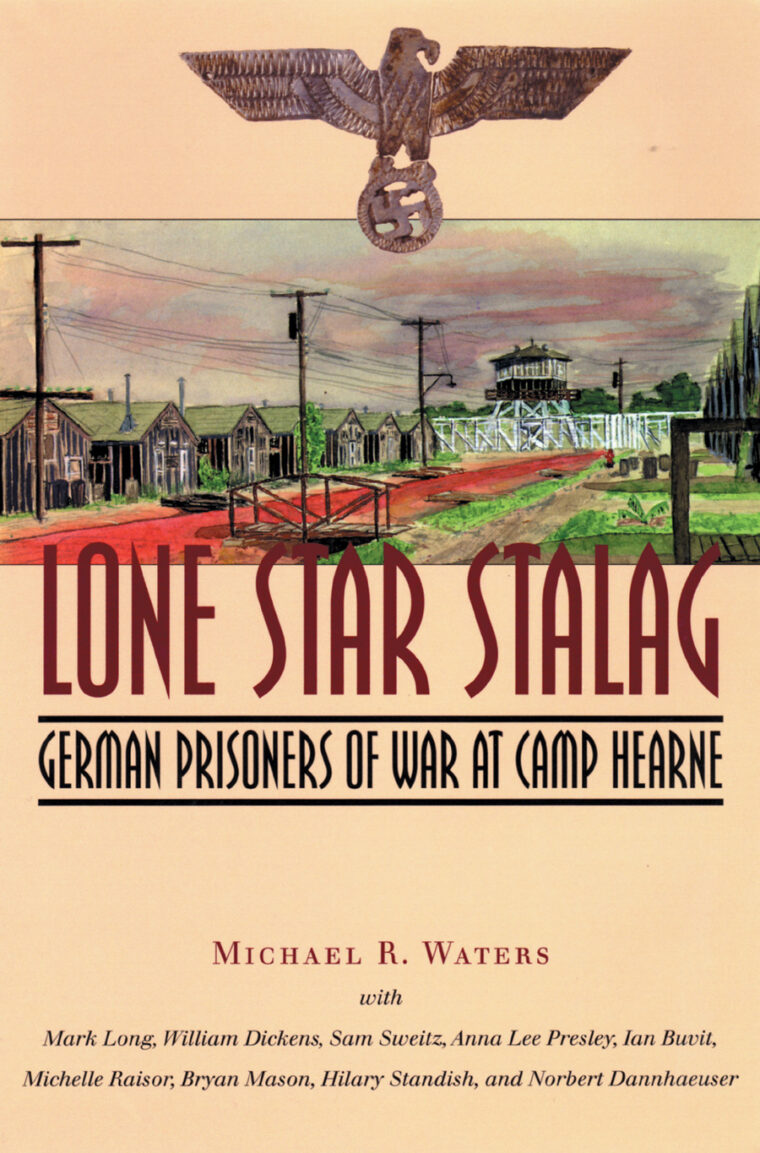 Lone Star Stalag: German Prisoners of War at Camp Hearne, by Michael R. Waters et al., Texas A&M University Press, College Station, 2004, 268 pp., illustrations, maps, tables, works cited, index, $29.95, hardcover.
Lone Star Stalag: German Prisoners of War at Camp Hearne, by Michael R. Waters et al., Texas A&M University Press, College Station, 2004, 268 pp., illustrations, maps, tables, works cited, index, $29.95, hardcover.
During World War II, more than 425,000 Axis prisoners of war were held at over 650 POW camps in the United States. Of these, 22 main and 48 branch camps were located in Texas. The largest of these, near Hearne, held almost 5,000 Germans between 1943 and 1945. This masterful synthesis, using accounts of and interviews with former POWs and guards, government and prison records, census documents and newspaper articles, and archaeological evidence, reconstructs life at the camp during World War II. The POW routine, diet, athletic and recreational activities, labor, and morale are described in superb detail. Chapter 3, “Problems at the Camp,” is perhaps the most intriguing and interesting of the book. It highlights the POW use of secret shortwave radios, illegal alcohol distillation, attempted escapes, Nazi propaganda activities, and even the notorious murder of one of the Germans by fellow POWs. The value of the text is enhanced by over 70 illustrations, detailed tables, and a comprehensive bibliography. From the cement slabs and decaying foundations of Camp Hearne, the authors have constructed a riveting narrative that makes an innovative contribution to Texas and World War II history.
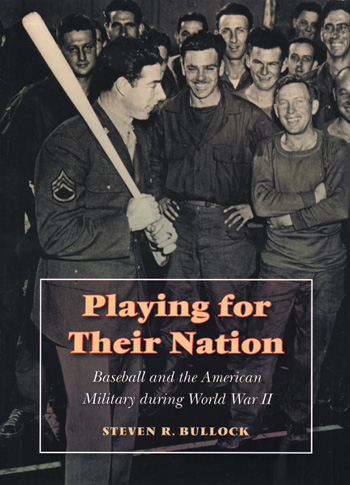 Playing for Their Nation: Baseball and the American Military During World War II, by Steven R. Bullock, University of Nebraska Press, Lincoln, 2004, 184 pp., illustrations, table, index, $30.00, hardcover.
Playing for Their Nation: Baseball and the American Military During World War II, by Steven R. Bullock, University of Nebraska Press, Lincoln, 2004, 184 pp., illustrations, table, index, $30.00, hardcover.
Baseball was in its “Golden Age” when the United States entered World War II in 1941. According to author Steven R. Bullock, baseball “personified the nation’s values and helped to unify an increasingly diverse population.” He shows in this captivating book that baseball dominated the national psyche and prevailed among all sports in the armed forces. Baseball helped raise military morale among spectators as well as participants, and was frequently used to raise funds for charitable activities. Commanders encouraged baseball, which increased the physical readiness and fitness of players, as was unit cohesion, teamwork, and the will to win. As America was called on to make many sacrifices during World War II, so was the Major League. Bullock estimates that throughout the conflict, over 90 percent of those on prewar Major League rosters “served in the fight against fascism.” He also chronicles the military experiences of legendary players Joe DiMaggio, Ted Williams, Bob Feller, and others, and the impact the war had on their individual baseball careers as well as on the sport as a whole. During the war years, as shown persuasively by Bullock, “baseball rose to the forefront to provide inspiration, financial resources, and leadership for servicemen and civilians who needed them.”
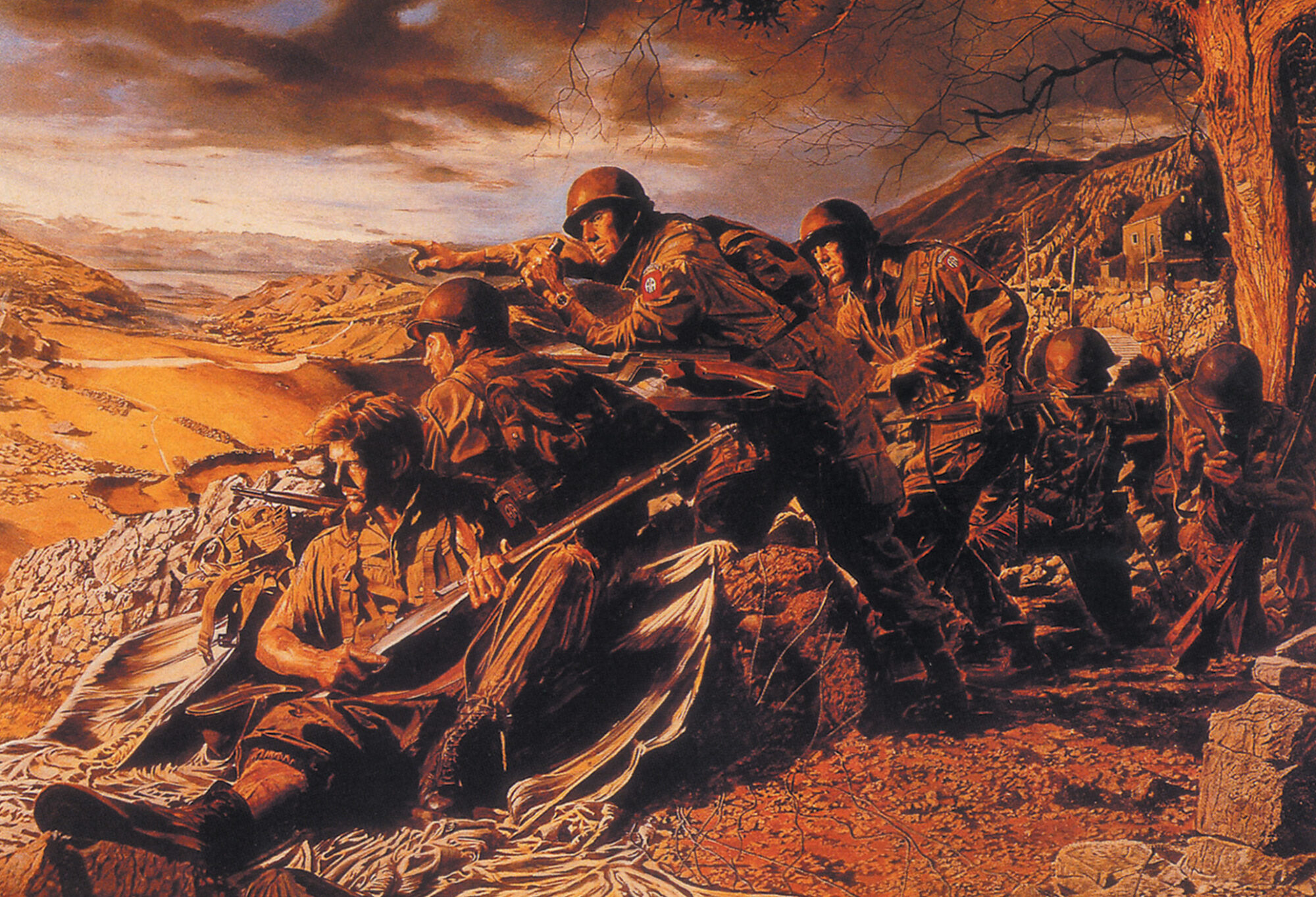
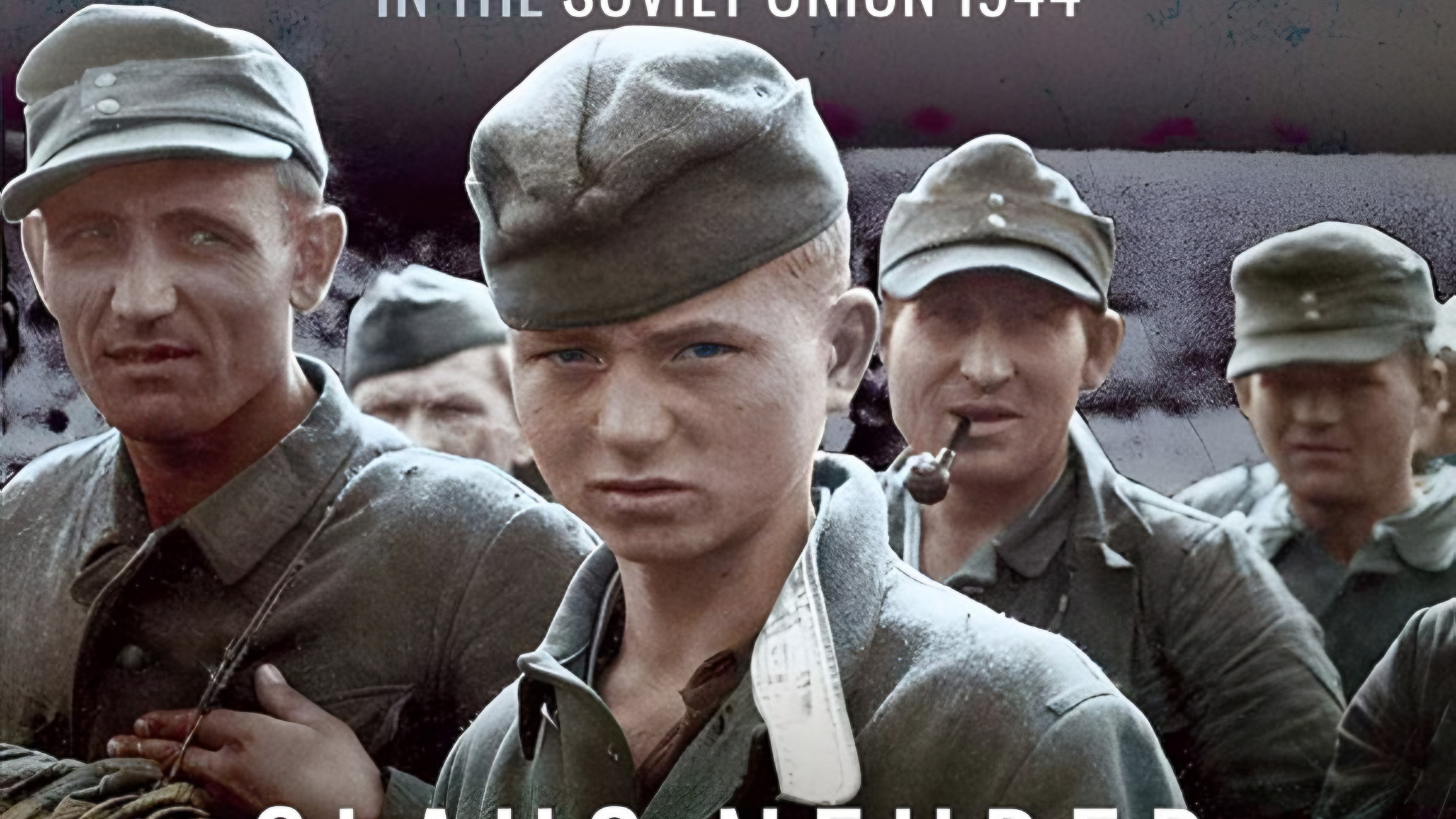
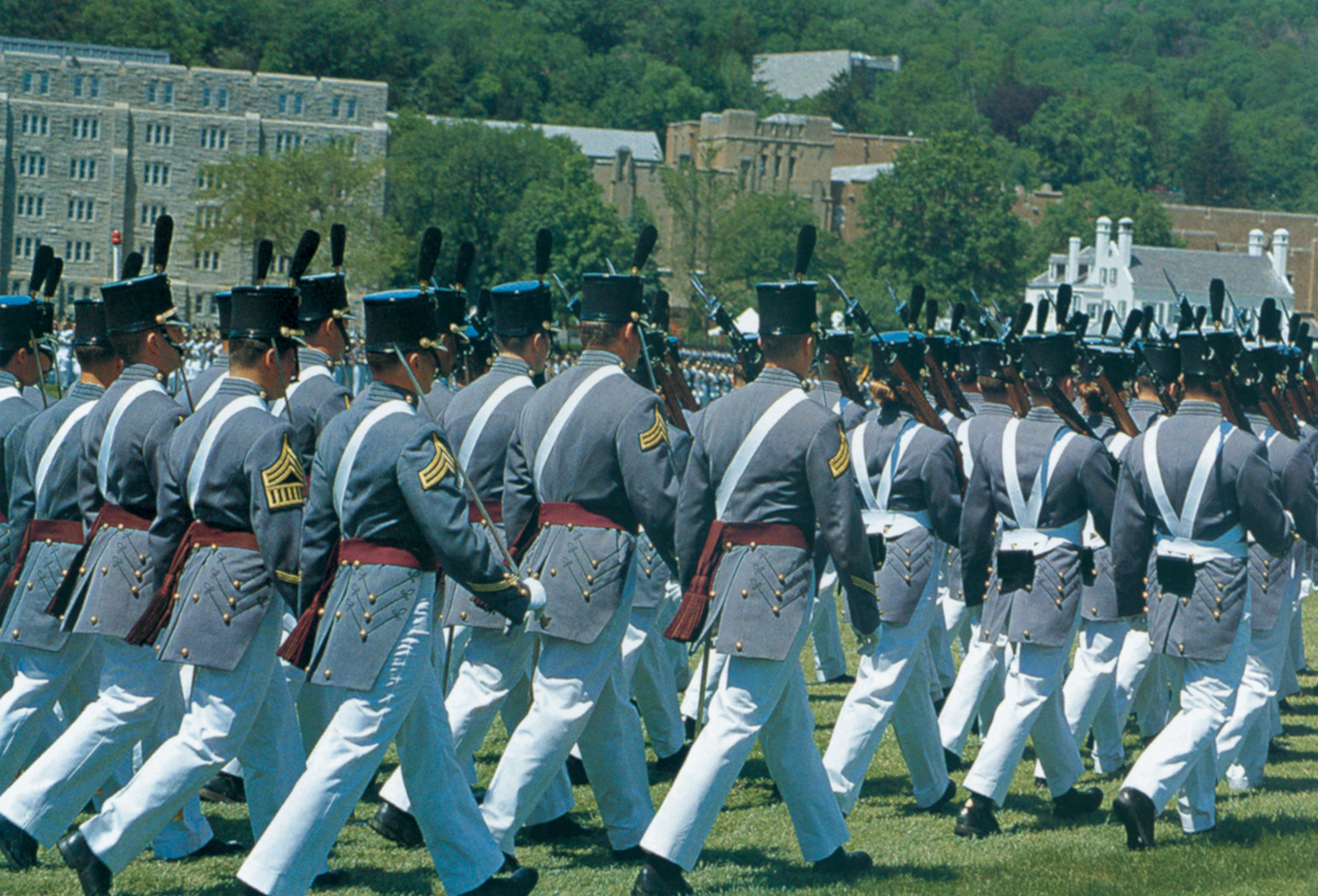

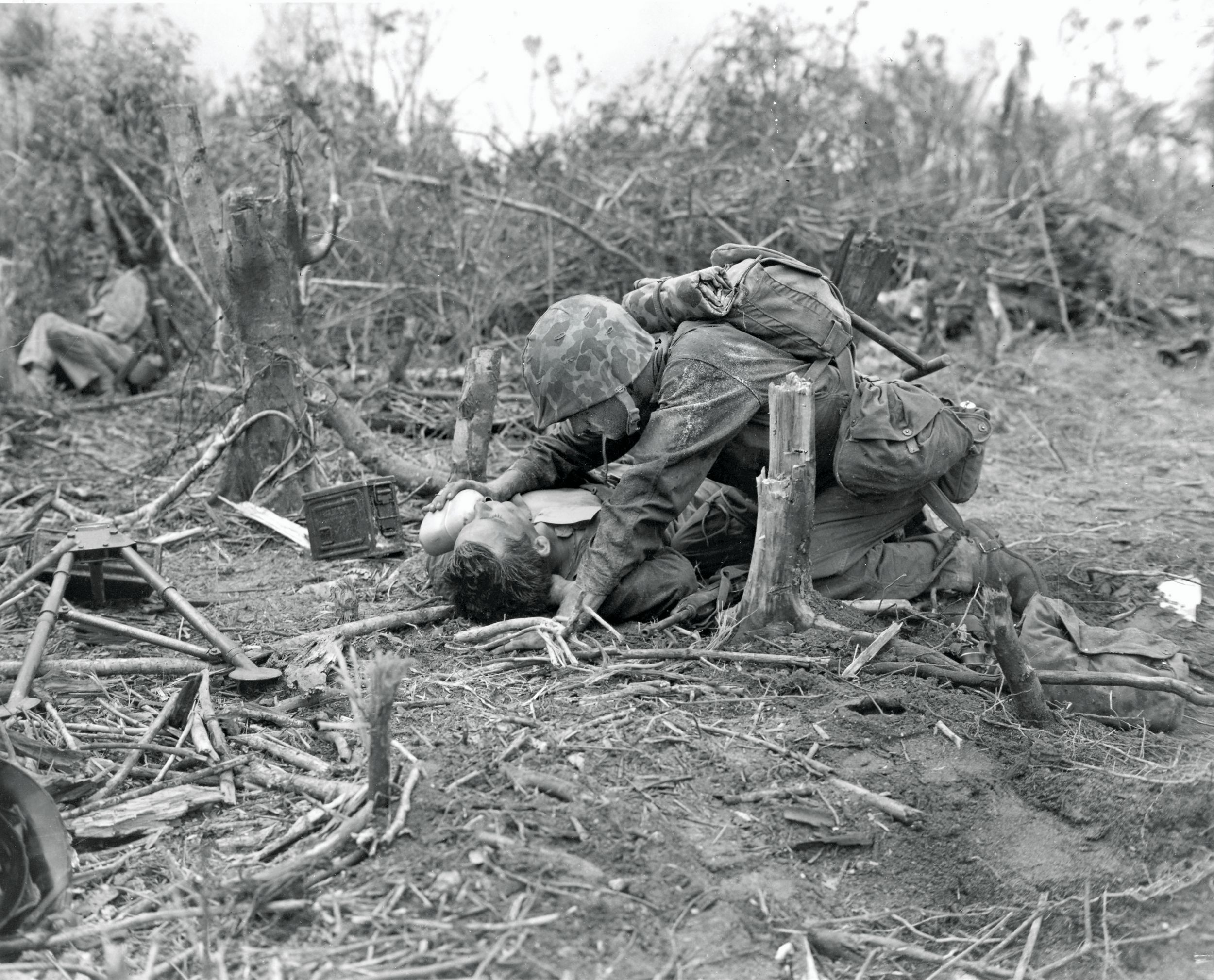
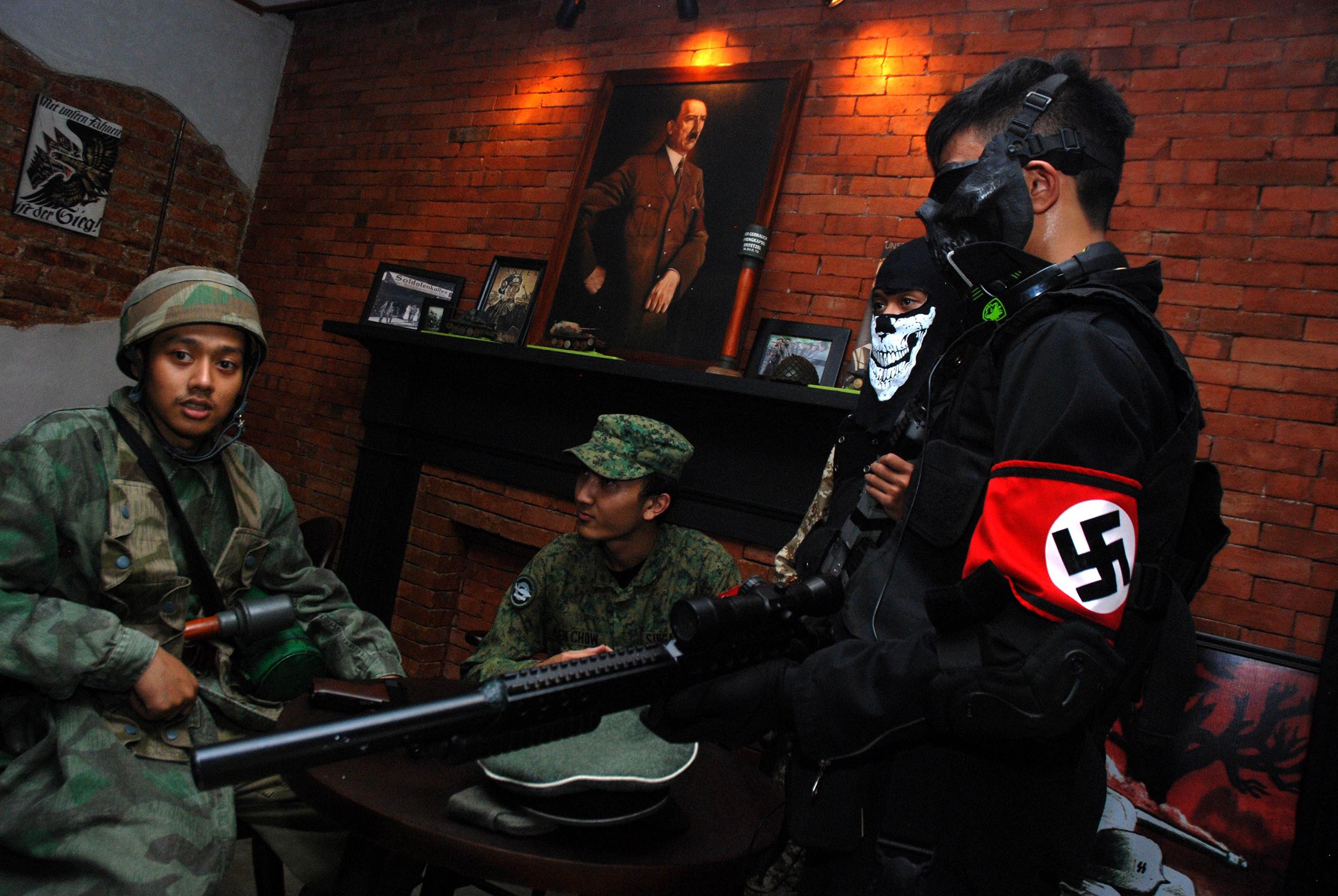
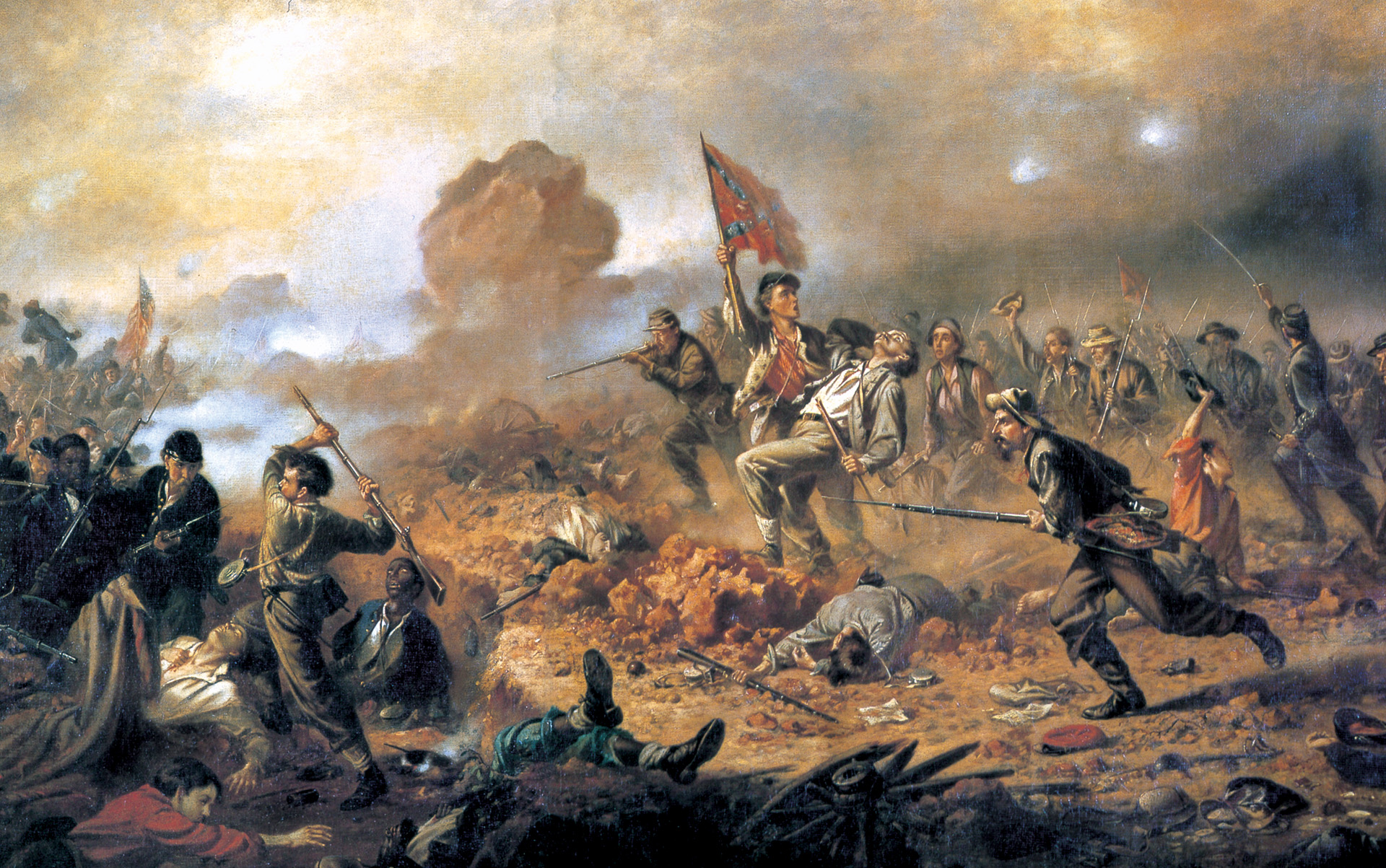
Join The Conversation
Comments
View All Comments